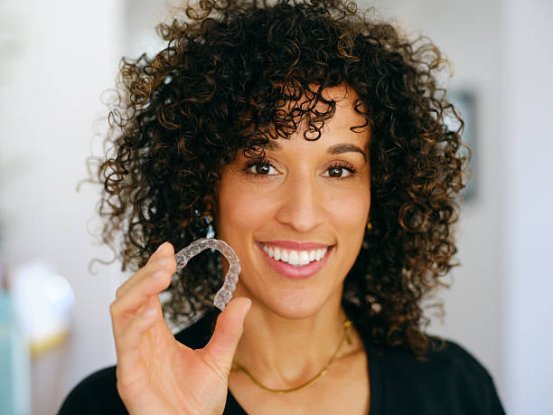Health
2025 US Guide to Affordable Braces and Teeth Straightening Options
In the U.S., various teeth straightening methods balance cost, comfort, and appearance, offering options like clear aligners, ceramic braces, or lingual systems for different dental needs.
In the U.S., various teeth straightening methods balance cost, comfort, and appearance, offering options like clear aligners, ceramic braces, or lingual systems for different dental needs.

Understanding the Main Teeth Straightening Treatments Available in the US
1. Traditional Metal Braces: Reliable and Cost-Effective
Metal braces remain one of the most affordable and effective orthodontic solutions for both simple and complex cases. Stainless steel brackets are attached to teeth and connected by wires, which are adjusted periodically to gradually align teeth.
-
Cost: Typically $3,000–$7,000
-
Treatment Duration: 12–24 months, depending on complexity
-
Suitability: Effective for all ages and complex misalignments
-
Pros: Proven effectiveness, cost-efficient, handles complex cases
-
Cons: More visible, requires strict oral hygiene and dietary adjustments
2. Ceramic Braces: Aesthetic Fixed Braces
Ceramic braces use tooth-colored or clear materials for a less noticeable look while maintaining effectiveness.
-
Cost: $4,000–$8,000 depending on provider
-
Pros: Less visible, fixed appliance ensures continuous correction
-
Cons: Higher cost, potential staining, requires careful cleaning
3. Self-Ligating Braces: Comfortable and Efficient
Self-ligating braces use clips instead of elastic bands to hold the archwire, reducing friction and discomfort.
-
Cost: $5,000–$9,000
-
Pros: Potentially shorter treatment time (12–24 months), improved comfort, easier hygiene
-
Cons: Higher cost, still visible (some offer clear brackets)
4. Lingual Braces: Invisible but Expensive
Lingual braces are attached behind the teeth, offering a discreet orthodontic solution.
-
Cost: Often $8,000+
-
Treatment Time: 18–24 months
-
Pros: Hidden from view
-
Cons: Difficult to clean, may affect speech, requires specialized orthodontists
5. Clear Aligners: Modern Discreet Option
Clear aligners are removable, transparent trays made from advanced materials, popular for convenience and aesthetics.
-
Cost: $3,000–$8,000 depending on brand and complexity
-
Popular US Brands: Invisalign, SmileDirectClub, Candid, Byte, ClearCorrect
-
Treatment Duration: 6–18 months with aligner changes every 1–2 weeks
-
Pros: Nearly invisible, removable for eating and cleaning, comfortable, effective for mild/moderate cases
-
Cons: Requires 20–22 hours of daily wear, may cost more than metal braces, less suited for severe cases
Insurance vs Out-of-Pocket Payment
-
Dental Insurance: May cover part of orthodontic treatment, often with age limits or caps.
-
Out-of-Pocket: Provides access to a wider range of treatments, including ceramic, self-ligating, lingual braces, and clear aligners. Financing options and monthly payment plans are common.
Accessing Affordable Teeth Straightening Treatments in the US
-
Initial Consultation: Licensed orthodontist consultation ($75–$250), with exams including X-rays, digital scans, and dental assessments ($50–$200). Personalized treatment plans and cost estimates are provided.
-
Financing and Payment Plans: 0% interest monthly plans, healthcare financing programs, and flexible dental office options.
-
Digital and At-Home Aligners: Services like SmileDirectClub, Candid, and Byte offer virtual consultations and home-delivered aligners, reducing costs and office visits. Compliance is essential for effective results.
Factors to Consider Beyond Cost
-
Additional costs: retainers ($150–$400), repairs, extra dental work
-
Treatment duration vs cost
-
Provider experience affects efficiency and results
-
Lifestyle compatibility: removable vs fixed appliances
-
Aesthetic preferences: visibility of braces
Making the Best Choice for Your Smile in 2025
The right treatment depends on budget, dental needs, lifestyle, and aesthetics. Metal braces are cost-effective and suitable for complex cases, while clear aligners offer discretion and convenience. Ceramic, self-ligating, and lingual braces provide alternatives balancing visibility and comfort. Consulting a licensed orthodontist helps explore insurance coverage, private options, and financing. With multiple treatment modalities available in 2025, informed decisions can help achieve a straighter smile in the U.S.
Sources:
Invisalign: Clear Aligners vs Traditional Braces
SmileDirectClub: Teeth Straightening US Prices
Candid: Best Clear Aligners US 2025
How do you like this article?




